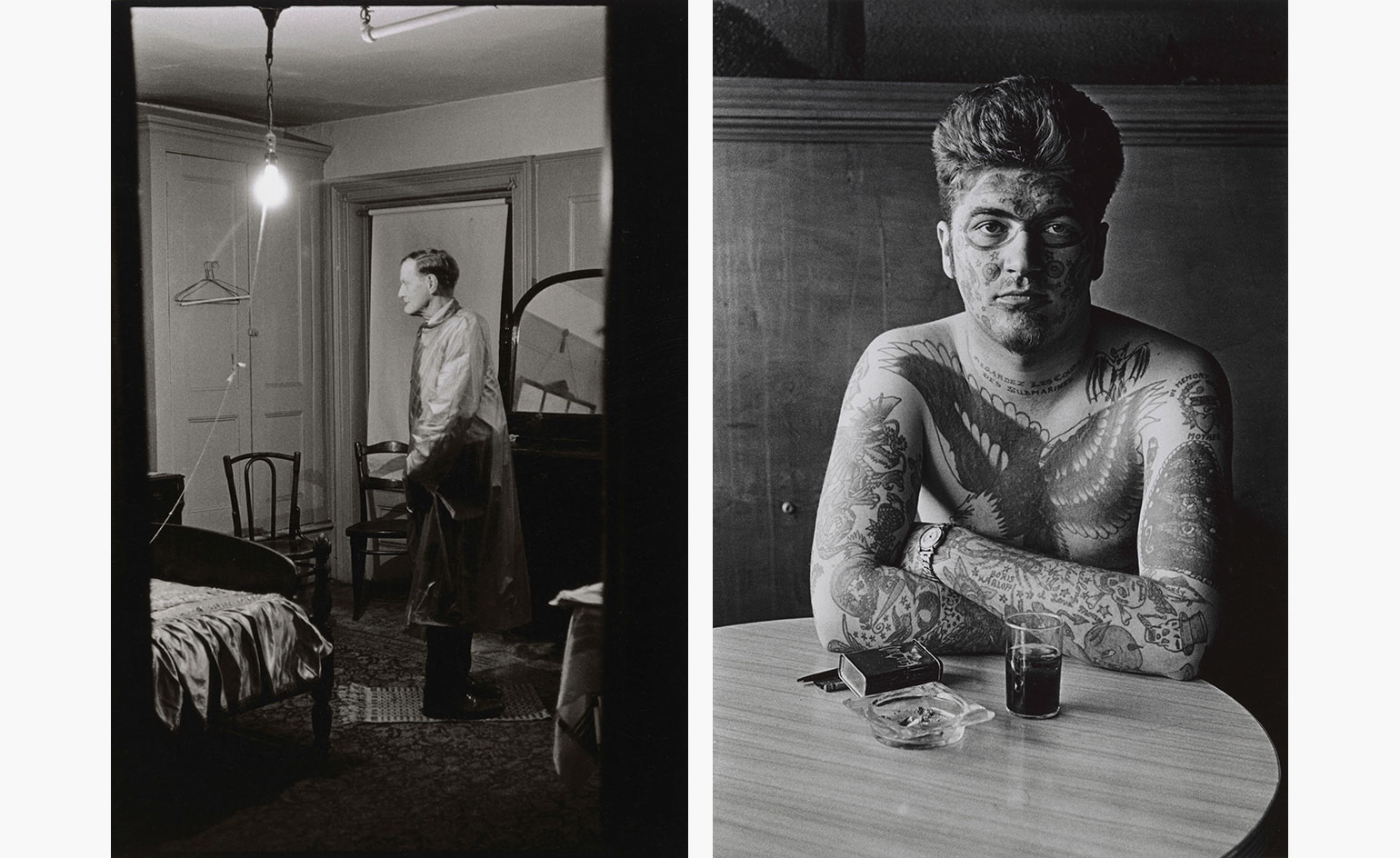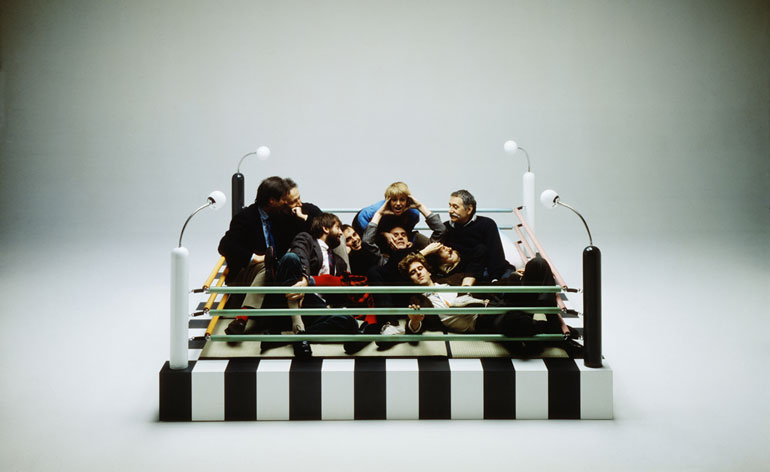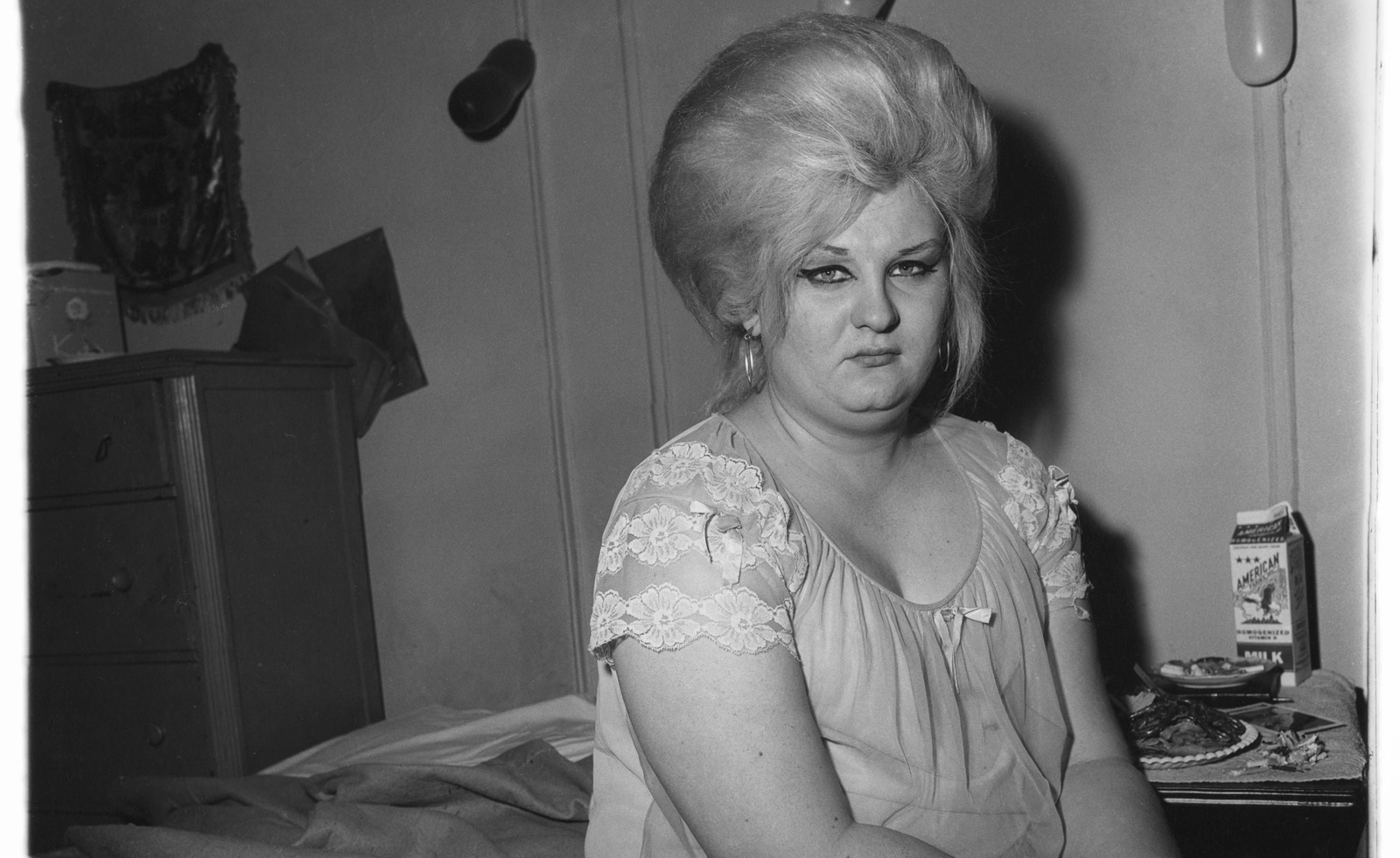’In the beginning’: Diane Arbus’ early works go on show at the Met Breuer

'I don’t press the shutter. The image does,' Diane Arbus once said. 'And it’s like being gently clobbered.' That softly smothering sensation, at once mellow and menacing, pulses through the Metropolitan Museum of Art’s new exhibition of Arbus’ early work. On view until 27 November at the Met Breuer, 'Diane Arbus: In the beginning' is a revelation, bringing together more than 100 photographs – most of them never before exhibited or published – that show Arbus honing her ability to capture secret and sublime moments of daily life.
Unlike her predecessors and peers who employed various techniques to distance or conceal themselves from their subjects (whether Helen Levitt’s right-angle viewfinder or the surreptitious snapping of Walker Evans), 'Arbus was looking for the poignancy of a direct personal encounter', says Met curator Jeff Rosenheim, who spent the last eight years combing through her vast archive: a trove of photographs, negatives, notebooks and correspondence donated to the museum by Arbus’ two daughters. 'This longing to know, this curiosity about the hidden nature of who or what she was photographing, coupled with her belief in the power of the camera to make that visible, is what sets her apart.'
Arbus’ passionate interest in the individual – whether a carnival fire eater, a cab driver, an elfin schoolgirl, or a corpse in open-chested repose ('with receding hairline and a toe tag', she notes in the grisly 1959 image’s title) – and contagious delight in finding that singular face in the crowd are underscored by the exhibition design, the work of the Met’s Brian Butterfield. Eschewing chronology and thematic cohesion, the show presents each photograph on its own slender wall. The 47 pale grey slabs echo Marcel Breuer’s gridded concrete ceiling and the urban streets of Manhattan (here framed by one of Breuer’s trapezoidal windows), where many of the photographs were shot.
The presentation celebrates the anonymous yet invites intimate encounters with the photographs, which focus on the first seven years of Arbus’ career, from 1956 to 1962. Confronting a single image bracketed by empty space empowers the viewer to scrutinize rather than contextualize, to savour faces and places that resist the cloying corruption of nostalgia. 'We have lost our ability to look at small things,' says Rosenheim, who recalls sketching the design concept on a napkin. 'This building gave me the opportunity to do this – I couldn’t have done it anywhere else.'

The show captures Arbus' unique ability to capture the secret and sublime moments of daily life. Pictured left: The Backwards Man in his hotel room, NYC, 1961. Right: Jack Dracula at a bar, New London, Conn, 1961

Unlike her predecessors and peers – who employed various techniques to distance or conceal themselves from their subjects – 'Arbus was looking for the poignancy of a direct personal encounter', says Met curator Jeff Rosenheim. Courtesy The Metropolitan Museum of Art

Pictured left: Lady on a bus, NYC, 1957. Right: Female impersonator holding long gloves, Hempstead, LI, 1959

Rosenheim has spent the last eight years combing through her vast archive: a trove of photographs, negatives, notebooks and correspondence donated to the museum by Arbus’s two daughters. Courtesy The Metropolitan Museum of Art

Arbus had a passionate interest in the individual – whether a carnival fire eater, a cab driver, an elfin schoolgirl, or a corpse in open-chested repose. Pictured left: Man in hat, trunks, socks and shoes, Coney Island, NY, 1960. Right: Kid in a hooded jacket aiming a gun, NYC, 1957

Rosenheim recalls sketching the design concept on a napkin. Confronting a single image bracketed by empty space empowers the viewer to scrutinise rather than contextualise, to savour faces and places that resist the cloying corruption of nostalgia. Pictured left: Elderly woman whispering to her dinner partner, Grand Opera Ball, NYC, 1959. Right: Woman with white gloves and a pocket book, NYC, 1956
INFORMATION
'Diane Arbus: In the beginning' is on view until 27 November. For more information, visit the Met Breuer website
Photography courtesy The Estate of Diane Arbus, LLC. All Rights Reserved
ADDRESS
The Met Breuer
945 Madison Avenue
New York, NY 10021
Receive our daily digest of inspiration, escapism and design stories from around the world direct to your inbox.
Stephanie Murg is a writer and editor based in New York who has contributed to Wallpaper* since 2011. She is the co-author of Pradasphere (Abrams Books), and her writing about art, architecture, and other forms of material culture has also appeared in publications such as Flash Art, ARTnews, Vogue Italia, Smithsonian, Metropolis, and The Architect’s Newspaper. A graduate of Harvard, Stephanie has lectured on the history of art and design at institutions including New York’s School of Visual Arts and the Institute of Contemporary Art in Boston.
-
 The new Tudor Ranger watches master perfectly executed simplicity
The new Tudor Ranger watches master perfectly executed simplicityThe Tudor Ranger watches look back to the 1960s for a clean and legible design
-
 This late-night hangout brings back 1970s glam to LA’s Sunset Boulevard
This late-night hangout brings back 1970s glam to LA’s Sunset BoulevardGalerie On Sunset is primed for strong drinks, shared plates, live music, and long nights
-
 How Memphis developed from an informal gathering of restless creatives into one of design's most influential movements
How Memphis developed from an informal gathering of restless creatives into one of design's most influential movementsEverything you want to know about Memphis Design, from its history to its leading figures to the pieces to know (and buy)
-
 Diane Arbus at David Zwirner is an intimate and poignant tribute to her portraiture
Diane Arbus at David Zwirner is an intimate and poignant tribute to her portraitureIn 'Diane Arbus: Sanctum Sanctorum,' 45 works place Arbus' subjects in their private spaces. Hannah Silver visits the London exhibit.
-
 ‘Her pictures looked like pictures everybody knew were the truth’: Diane Arbus at the Armory
‘Her pictures looked like pictures everybody knew were the truth’: Diane Arbus at the ArmoryMatthieu Humery curates more than 400 of Arbus’ photographs at New York’s Park Avenue Armory – every picture she was known to have printed